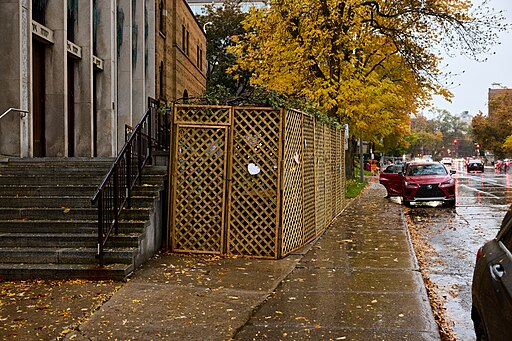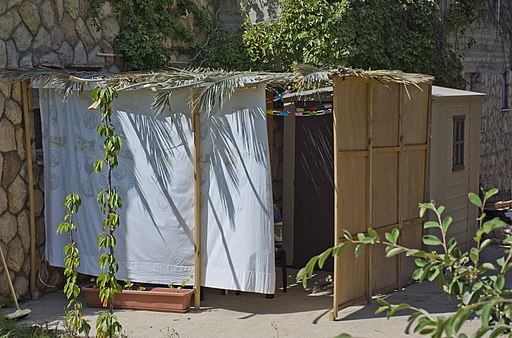Sukkot, the Feast of Tabernacles, is one of the most elaborate and expressive holidays on the Jewish calendar. It is the end of the agricultural harvest and celebrates God’s provision for Israel. It is a time for joy and rejoicing over all the Lord God has done. During the days of the First and Second Temples in Jerusalem, the Sukkot festival included the most extensive sacrifices and celebrations. It was a time to commemorate God’s provision for the people of Israel when the Lord our God brought us out of Egypt by night (Deuteronomy 16:1).
Sukkot in Ancient Israel
The Hebrew Scriptures give ample instruction regarding what to do and how to conduct worship (Leviticus 23:33–44; Deuteronomy 16:13–15; Numbers 29:12–38).
Three times a year, all Jewish men were to appear in Jerusalem to present themselves before the Lord: Passover in the first month, the Feast of Weeks fifty days later, and the Feast of Tabernacles in the tenth month, according to Exodus 23:14–17. In Exodus 23:16, the festival is called the Feast of the Ingathering, חַג הָֽאָסִף, chag ha’asif.
The ceremonial aspects of the Feast of Tabernacles, as they were conducted in the First and Second Temple periods in Jerusalem, have ceased. The Babylonians destroyed the First Temple in 586 BCE, and the Romans tore down the Second Temple in 70 CE. The expulsion of the Jews from the Land of Israel by the Romans separated the people from the agricultural aspects of the festival.
Tabernacles in the Diaspora
During the Diaspora, which continued for almost 2,000 years, many laws, requirements, customs, and traditions have lapsed or been significantly modified. A Diaspora-based festival without the Temple and the Land is stripped of its most profound significance. The Jewish leader overcame an impossible task by finding ways to keep Sukkot alive and relevant in the hearts and minds of Jewish people.
With the absence of the agricultural aspects and ceremonial features, Jewish people in the Diaspora have come to emphasize other aspects of Sukkot. According to Jewish sources, there are other meaningful expressions: “The Rabbis actually nicknamed Sukkot, Z’man Simchatenu, the Season of Happiness.”[1]
Still, Sukkot in the Diaspora is not the same. The building of the traditional sukkah booth is limited in the urban settings where many Jewish people live in the Diaspora. In large urban centers like New York and Philadelphia, apartment dwellers have no yards to build a booth. Even the local synagogues have limited space to construct communal sukkot for their congregations.

A sukkah (booth) in Canada (source: D. Benjamin Miller, Wikimedia Commons).
Millions of Jewish people live in Europe, Russia, and North America, where the climate can be harsh—even during the Sukkot season. Dwelling in a temporary shelter for seven days is not recommended. There is also the safety factor in urban centers, which can be hostile to anyone sleeping in an open tent.
Additionally, there is a problem concerning the four elements necessary to celebrate Sukkot: the etrog (citron), lulav (palm branch), hadas (myrtle branch), and the aravah (willow branch). These four species are all indigenous to the Middle East but only to some parts of Europe or North America.
Tabernacles Returns to Israel
Then, in 1948, with the establishment of the State of Israel and the return to the Land of tens of thousands of Jewish people from the Diaspora, Sukkot returned with them. The building of sukkah booths resumed across the country regardless of whether people were religious or secular. Today, most apartments in Israel have porches, and people build their sukkot on these balconies. All your meals could be eaten there in the luxury of your own patio, and the children could sleep outside. The weather is pleasant, and no one gives much thought to safety or crime.
Sukkah booths are erected nationwide. In the cities and public spaces, the municipalities provide a sukkah for the public, and in private restaurants, space permitting, a booth will also be available. This provision means you can eat the required meals in a proper booth, no matter where you are in Israel.
Unlike the Diaspora, finding where to purchase the required four elements in Israel is no problem. You can easily buy the necessary foliage in the main marketplaces in every city. Vendors appear approximately one week before Sukkot, and the competition is serious.
Once you select and purchase your four elements, you need some way to protect them for the next eight days. Every morning, in the synagogue or designated place of prayer, the worshiper holds the elements and waves them in four directions. To protect the fragile branches while in transit, a specially designed carrying case is available for the worshiper’s convenience. A common sight in Israel is young soldiers in uniform carrying their M-16 weapons on one shoulder and their four species case in their other hand. Religious soldiers are given time for morning prayers if they are at their base or on duty. They will remove the elements and wave them as part of their morning prayers.
Sukkot’s National Impact
The eight days of Sukkot are a national holiday in Israel. Children are off from school, universities are not in session, and work schedules are adjusted for the holiday. It is a time for family and recreation. The public parks are overflowing as families get out and go camping and hiking in the beautiful, well-maintained nature reserves and parks in Israel.

A sukkah (booth) in Israel (source: Zachi Evenor, CC BY 2.0 https://creativecommons.org/licenses/by/2.0, Wikimedia Commons).
Another significant aspect of Sukkot in Israel is the prayer for seasonal rains, which begins during the festival. From mid-spring in May until the end of summer in September, little or no rain typically falls in Israel. The land is dry and parched by the fifteenth day of the ninth month. The threat of wildfires is a grave concern, and everyone in the Land awaits the change of season as they expect rains to commence.
The prayer for rain is found in the basic Hebrew prayer book. On the last day of Sukkot, there is a special day of worship called Shemini Atzeret. On this day, Jewish people offer prayers throughout Israel, asking the Lord to send the seasonal rains: “Turn to us—for woes engulf our souls like water. For the sake of their righteousness, grant abundant waters! For You are the Lord, our God, Who makes the wind blow and makes the rain descend.”[2]
The last day of Sukkot and the prayer for rain has been observed since the festival’s inception. It should be no surprise the New Testament mentions it. On the last day of Sukkot, Jesus was with other Jewish worshipers outside the Temple. They had gathered on Shimini Atzeret, the last day of the festival. In the Gospel of John, the apostle records this observance along with Jesus’ poignant comments: “Now on the last day, the great day of the feast, Jesus stood and cried out, saying, ‘If anyone is thirsty, let him come to Me and drink. He who believes in Me, as the Scripture said, “From his innermost being will flow rivers of living water”’” (John 7:37–38).
On that day in Jerusalem more than two thousand years ago, Jesus spoke to the heartfelt needs of our Jewish people. He was there to quench a thirst not satisfied by water but by a deeper spiritual hunger. Jesus came to refresh the nation of Israel and all people of all countries. Sukkot has been restored, and the Lord God continues to bless and meet the needs of all who call upon Him. What invitation is Jesus extending to you to dwell in your camp and make His home within you?
Notes
[1] Rabbi Josh Weinberg, “The Sukkah of Israel and Diaspora,” ARZA, October 11, 2019, https://arza.org/the-sukkah-of-israel-and-diaspora/.
[2] Rabbi Nosson Scherman, The Complete ArtScroll Siddur: Weekday/Sabbath/Festival, ed. Rabbi Meir Zlotowitz (Rahway, NJ: Mesorah Pubns Ltd, 1984), 709.



